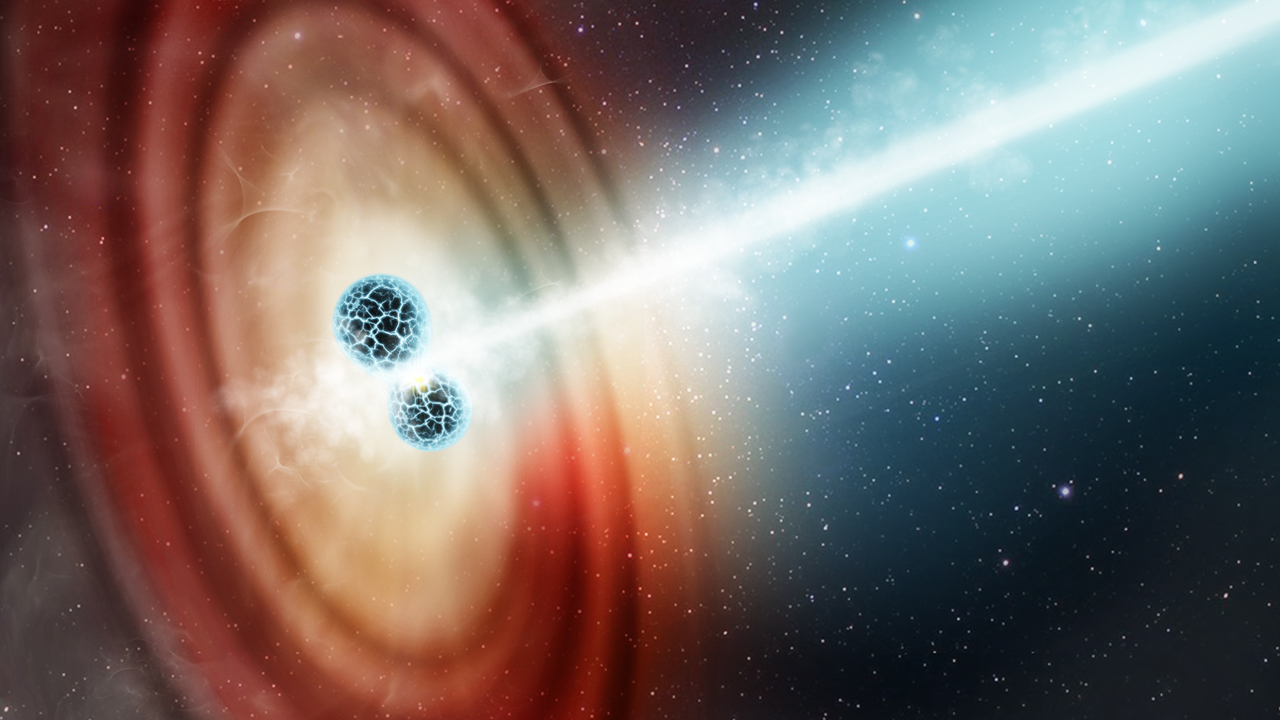Hubble Space Telescope finds neutron star collision's jet travels nearly as fast as light
In August 2017, astronomers witnessed an incredible explosion in space — two ultra-dense neutron stars collided head-on, releasing an extraordinarily powerful jet of radiation.
Two days later, the Hubble Space Telescope was on the scene studying that jet. Now, five years after the event, which was astronomers' first detection of gravitational waves from neutron stars, researchers have finally been able to measure the speed of the jet.
"Our result indicates that the jet was moving at least at 99.97% the speed of light when it was launched," Wenbin Lu of the University of California, Berkeley, who helped decipher the data, said in a statement.
Related: How neutron star collisions flooded Earth with gold and other precious metals
The GW170817 event, as scientists call the incident, was first detected by its gravitational waves and gamma-ray emissions, which were monitored by 70 observatories here on Earth and in low Earth orbit, including Hubble. That data indicated that the collision of these superdense neutron stars created a black hole and an explosion almost equal to a supernova in terms of the energy released.
As the newly born black hole began to feed, it pulled material into a swirling disk and began shooting matter in both directions from the center of that disk — forming the jet that Hubble observed.
To determine the speed of the jet, researchers specifically looked at the motion of a "blob" of debris from the explosion that the jet pushed out into the universe. "The incredible precision, gleaned from Hubble and radio telescopes, needed to measure the blob's trajectory was equivalent to measuring the diameter of a 12-inch-diameter pizza placed on the moon as seen from Earth," NASA officials wrote in the statement.
Breaking space news, the latest updates on rocket launches, skywatching events and more!
The work was particularly challenging because the jet pointed toward Earth and therefore appeared to be moving much faster than it was — four or seven times the speed of light, depending on the observations, although it's impossible for any matter to travel faster than light-speed.
"I'm amazed that Hubble could give us such a precise measurement, which rivals the precision achieved by powerful radio VLBI [very long baseline interferometry] telescopes spread across the globe," Kunal P. Mooley of Caltech, lead author of a new paper on the research, said in the statement.
It took five years for researchers to come up with a method powerful enough to analyze the event, but the time was well spent. Now, scientists have more methodologies to use when studying neutron star mergers. And more specifically, they'll be able to do deeper research into gravitational waves, which may help them one day more accurately measure the universe's expansion rate.
Mooley's paper was published Wednesday (Oct. 13) in Nature.
Follow Stefanie Waldek on Twitter @StefanieWaldek. Follow us on Twitter @Spacedotcom and on Facebook.

Space.com contributing writer Stefanie Waldek is a self-taught space nerd and aviation geek who is passionate about all things spaceflight and astronomy. With a background in travel and design journalism, as well as a Bachelor of Arts degree from New York University, she specializes in the budding space tourism industry and Earth-based astrotourism. In her free time, you can find her watching rocket launches or looking up at the stars, wondering what is out there. Learn more about her work at www.stefaniewaldek.com.

